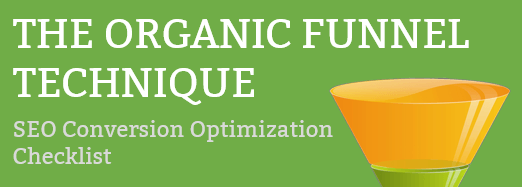
Its the end of 2023. The economy sucks, the job market sucks, and AI is stealing jobs.
So what is the answer to growing our companies so we can avoid losing profit, start beating our competitors, and avoid layoffs?
There are three strategies you need to adopt now that are timeless in the digital age. They will enable your business to start on a path toward growth.
If you are not using them, you are missing out on real opportunities to drive growth regardless of what your business does.
These 3 digital strategies will sound simple, but simple is actually quite hard for leaders to pull off and they are often forgotten in the “busyness” of getting projects done.
Strategy 1: Clear Goals and Goal Pathways
First off, a company needs to figure out where they want to go – that’s like setting the end destination for the road trip. These destinations are the goals, such as getting more sign-ups, selling products, or simply sharing information. It’s like deciding whether you’re heading to the beach, a mountain retreat, or a city adventure.
Next, just like you’d choose the right car for your trip, a company needs to pick the right digital tools. Do they need a website overhaul, a catchy social media campaign, or maybe an engaging email series? It’s all about choosing the vehicle that suits the journey.
Then, it’s crucial to understand who’s coming along for the ride – in other words, knowing the audience. What do they like? What do they need? It’s like knowing if your road trip buddies prefer scenic routes, fast highways, or stops at quirky roadside attractions.
Now, imagine setting up milestones along the way – those are like mini-goals. They help keep track of progress and make sure the company is headed in the right direction. Maybe it’s reaching a certain number of followers on social media or getting a specific amount of feedback on a new product. These milestones are like checking off the must-see spots on your road trip map.
Also, it’s important to be ready to take a detour if needed. If something’s not working – say, an email campaign isn’t getting the expected response – it’s okay to reroute. Maybe try a different subject line, or a more engaging message. It’s just like finding a road closed and having to take a different path.
Lastly, celebrate the small wins along the way. Each milestone reached is like enjoying a great view or a fun stop on your road trip. It keeps everyone motivated and excited about the journey.
Creating clear digital goals is all about knowing the destination, choosing the right route, understanding the travelers, marking the milestones, being flexible, and enjoying the journey. It’s a road trip through the digital landscape, with each stop bringing its own rewards!
Key Tactic: Monitor Your Growth Rate

Now, just creating goals and the pathways a customer can take toward those goals is critical, but monitoring these goals is critical to being able to make decisions about the effectiveness of those goals. You have to watch your overall business growth rate to determine if your goals are having an impact.
Think of a business growth rate as a key performance indicator (KPI) like a speedometer in a car. It tells you how fast your business is moving forward. Just like you glance at the speedometer to see if you’re going too slow, too fast, or just right, the growth rate gives you a quick read on how your business is doing. It measures how much your business has expanded over a specific period, like looking at the distance you’ve covered on a road trip compared to the last time you checked. It could be about sales, profits, number of customers, or any other key aspect you’re focusing on. Basically, it’s a quick, clear way to see if you’re zooming ahead, cruising comfortably, or need to step on the gas to reach your business goals.
Strategy 2: Creating Useful Content
I ran two surveys in 2023 on LinkedIn trying to find out what marketers thought about the importance of content in their strategy. Surprisingly, not everyone thought that it was important for visitors to understand their content.
So let’s define what content can be.
- Videos: Anything from product demos to entertainment. It could be on-demand or streamed. It can be across many different platforms from self-hosted to YouTube, Instagram/Facebook, LinkedIn, TikTok, and any number of other sites.
- Graphics: Usually used in support of other content, graphics can include backgrounds, charts, screenshots, stillshots used across websites, ad campaigns, social media, and other places.
- The Written Word: Text is found everywhere. From email to social media to websites to SMS. There is no escaping text.
The ability for some to understand your content, regardless of the type of content it is, or where it is found is critical to your growth as a business. If a potential customer is confused in any way, they will not buy. Remember, buying is more about an emotional decision than it is a logical decision.
Understanding your content is crucial, think of it like having a conversation. If you’re talking to someone and they just don’t get what you’re saying, it’s like you’re speaking different languages, right? The same goes for your content. When someone truly understands your content, it’s like you’re both speaking the same language, and that’s where the magic happens.
First, when your audience gets what you’re saying, they’re more likely to engage with it. It’s like telling a joke that everyone laughs at because they get the punchline. This engagement is key to building a (long-term) relationship with your audience.
Second, understanding leads to trust and credibility. If your content makes sense and is relatable, people start to see you as a reliable source. It’s like when a friend gives you advice that really works – you trust them more.
Then there’s action. When people understand your content, they’re more likely to do what you’re suggesting, whether it’s buying a product, signing up for a newsletter, or just sharing your post. It’s like following a recipe – if it’s clear, you’ll probably end up with a tasty dish.
Plus, when your content is understandable, it’s shareable. People love to share things that make sense to them. It’s like when you read a great book and can’t wait to tell your friends about it.
And finally, it’s about inclusivity. Making your content understandable means more people can access and benefit from it, regardless of their background or education level. It’s like opening your doors to a wider audience.
So, understanding your content is about making connections, building trust, inspiring action, encouraging sharing, and being inclusive. It’s the key to making your message not just heard, but felt and acted upon.
Key Tactic: Monitoring Content Performance

Monitoring your content’s performance to ensure your audience gets it is a bit like being a detective. You’re looking for clues to see if your message is hitting home. Start by checking out the comments and reactions – it’s like eavesdropping on what people are saying about your work. Are they asking questions, sharing it, or even better, taking action based on your content?
Then, dive into the analytics. Look at things like how long people are staying on your page, or if they’re bouncing off quickly, which might mean they’re not finding what they’re looking for. Don’t forget to keep an eye on those share numbers too; it’s a good sign if people are passing your content around like a hot piece of gossip. And hey, why not just ask your audience directly through surveys or feedback forms? Sometimes, the best way to find out if someone understands you is simply to ask.
Strategy 3: Engagement Optimization
Imagine you’re a DJ at a club, and your job is to keep everyone dancing and having a great time. In the digital world, that’s engagement optimization. Whether it’s through email, social media, videos, or ads, you’re tuning into what your audience loves, what gets them excited, and what keeps them coming back for more. It’s all about creating experiences that resonate with them, whether it’s a catchy email that feels like it’s just for them, a social media post that starts a conversation, a video that tells a story they can’t look away from, or an ad that catches their eye and gets them thinking. In each case, you’re mixing the right beats to keep the energy high and the crowd engaged.
Starting with email marketing, it’s kind of like sending personalized invites. You know your guests, so you tailor your messages to what they like. Maybe some prefer fancy, formal invites, while others like a fun, quirky note. Also, you don’t want your invite to look weird on their phones, right? So, you make sure it looks good on any device. And hey, why not try out different styles of invites (that’s A/B testing) to see which ones get more people excited?
Moving on to social media, think of it as the heart of your party. You’re not just announcing stuff; you’re chatting with guests, sharing cool photos and videos, and maybe even showing off some user-generated content – like pictures from your last party. It’s all about creating a vibe that makes people want to join in and share their own stories.
Now, let’s talk about video marketing. This is like the main entertainment of the evening. You’ve got to tell a story that captivates your audience, with good lighting and sound to set the mood. And don’t forget to gently guide them to the next step of the party – maybe a game or a dance floor. Live streaming can be a hit too, as it brings everyone together in real-time.
As for advertising, it’s like the signs and directions that lead people to your party. You want to make sure they’re eye-catching and speak directly to the people you want at your bash. You might even put up special signs for folks who passed by earlier but didn’t stop (that’s retargeting). And it’s always a good idea to keep testing different signs to see which ones catch more attention.
But here’s the thing – no matter which channel you’re using, there are a few key things to remember. Keep your party theme consistent. You don’t want your guests getting mixed messages. Use all the feedback and chats to make your next party even better. And always be ready to chat back when someone reaches out to you. Lastly, stay on top of trends. You want your party to be the one everyone talks about, right?
So, that’s engagement optimization in a nutshell. It’s all about knowing your guests, making them feel special, and keeping the party lively and fun, no matter how they choose to join in!
Key Tactic: Setting Up a Testing Methodology

Let’s keep the analogy going and assume the marketing team are the party managers behind the scenes where this party is happening.
Their goal is to make the experience and the dishes that customers absolutely love. Using a testing methodology to increase customer engagement is like experimenting with different songs, lighting, and DJs experiences to find out what gets the most “Wow!” reactions. They might tweak the lighting levels here, adjust the bass there, or even try a totally new remixed song. Each test is like a small test with customers. This way, they gather feedback on what’s a hit and what’s a miss. It’s really all about understanding the customers’ experience better. By continuously trying out new things and refining their approach based on what customers love, the marketing team can create more engaging and effective campaigns. You’re perfecting the experience to keep customers coming back more often!

